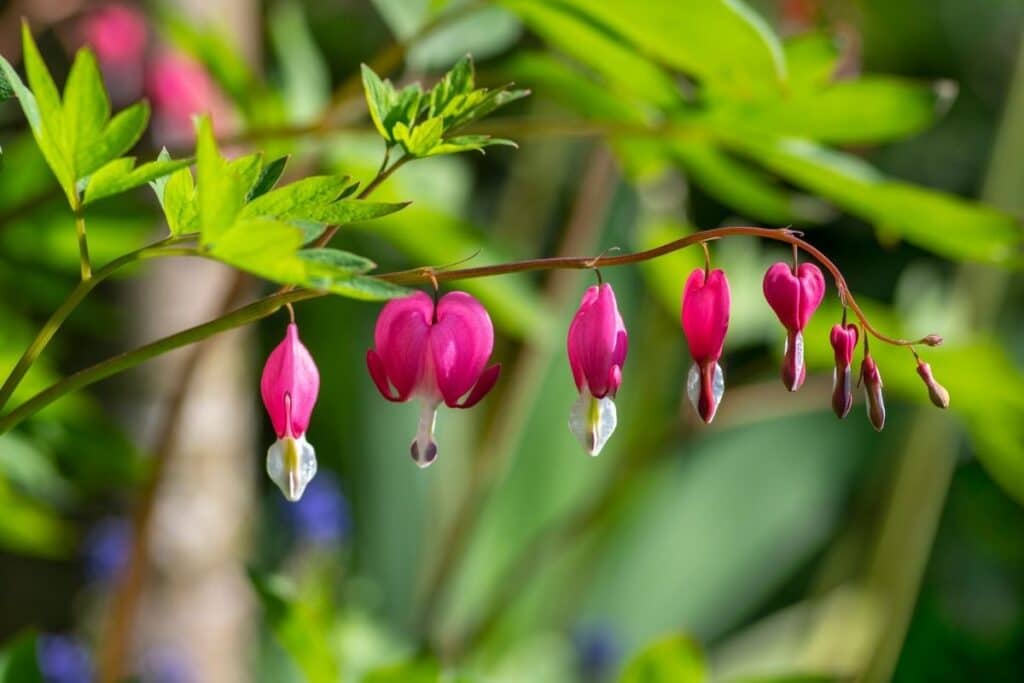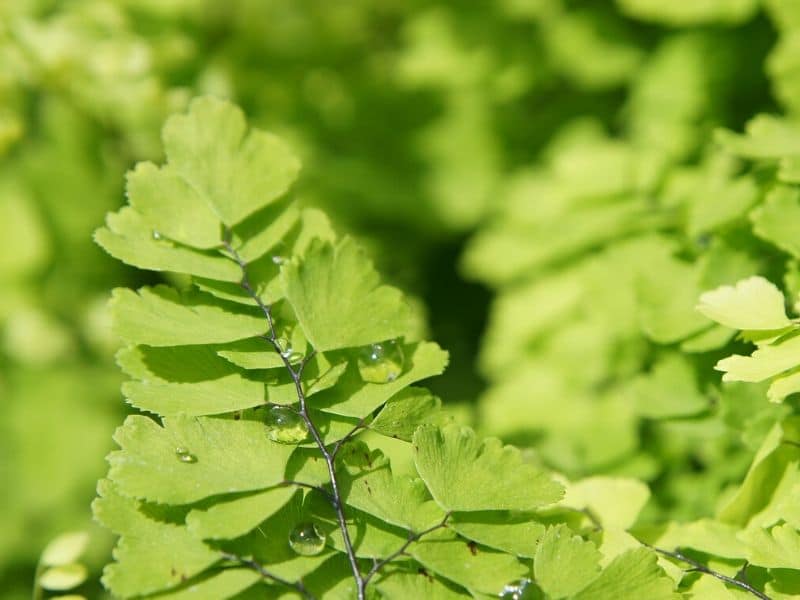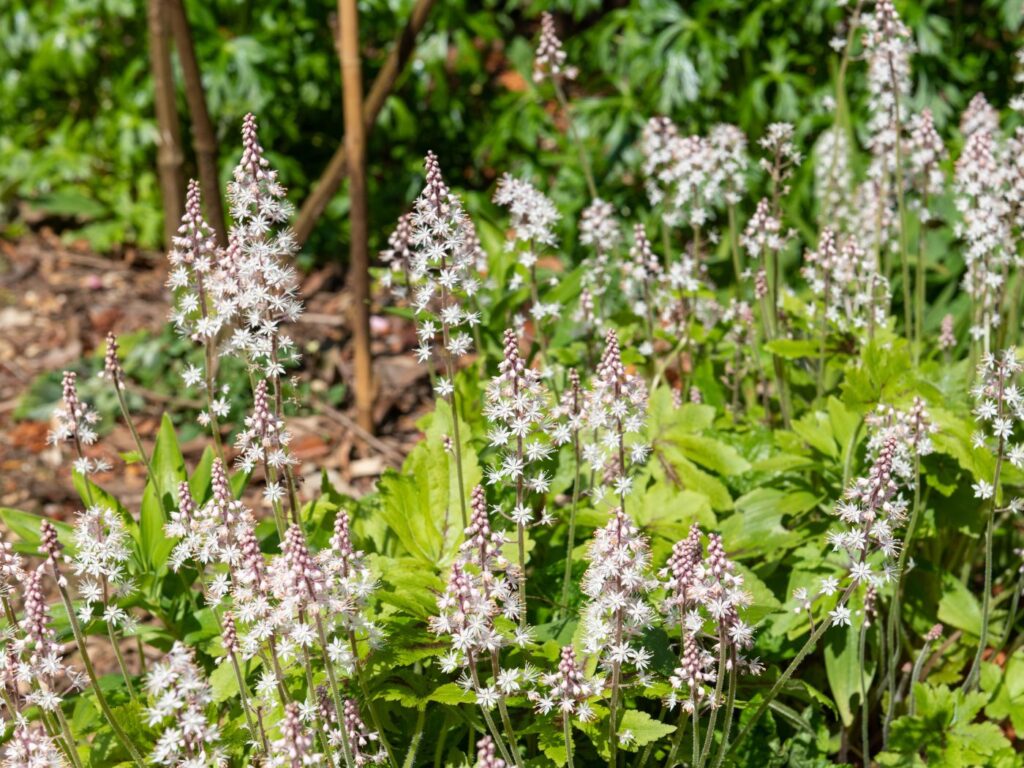Foamflowers (Tiarella cordifolia) are charming perennials native to eastern North America. These flowers will add lots of texture to your garden when they produce delicate white flowers on tall spikes during spring.
These flowers are popular in ornamental gardens because they are so easy to maintain, and they will spread all over your garden beds on their own without any additional help from your side.
The foam flower looks its absolute best in mass planting, and if it is paired with companions, that will complement the hues of these plants with their heart-shaped leaves.
In this guide, we are going to find out what to pair with foam flower species so you can create a great-looking garden bed.
What to Plant with Foamflowers
For successful companion planting with foamflowers, you should look for plants that can grow well in a shade garden because these flowers prefer partial to full shade and need to be established in a moist area with well-drained soil.
There are quite a few plants that can grow well in these moist and cool conditions, like the following.
Japanese Painted Ferns
Japanese-painted ferns (Athyrium niponicum) are some of the best companion plants to pair with foam flower plants.
These ferns will add lots of texture to your garden bed with their tall leaves, and the deciduous fern will add a splash of color because it produces cool grey-green leaves on reddish-purple stalks.
The stems and leaves of these evergreen ferns are terrific for concealing the faded flowers of foamflowers during off seasons like fall, winter, or summer.
This fern grows well in shade areas and should be established in free-draining soil with lots of organic matter.
This plant’s foliage will grow slightly taller than foam flower plants. As such, it is best to establish your flowers around the foliage plant or in front of these ferns.
Siberian Bugloss

Blue brunnera (Brunnera macrophylla), also known as Siberian bugloss or forget-me-not, are perfect companions if you want to add lots of color to your garden because they produce lots of tiny bright blue flowers that can complement the white foamflowers very well.
These flowering plants will grow well in moist, well-drained soil and should be positioned in a cool area in your garden.
Planting these perennials in the back with shorter foam flowers in the front so both plants can be nice and visible.
Sweet Violets

Sweet violets (Viola odorata), also known as wood violet, English violet, or common violet, are also terrific companions because they will add lots of color to your garden when they bloom from late winter to early spring.
These gorgeous plants require lots of moisture but shouldn’t be overwatered. They also grow well in dappled shade.
You can mix sweet violets and foamflowers all over your garden bed to create a very beautiful display of color and texture.
Bleeding Hearts

Bleeding hearts (Lamprocapnos) are popular in shade gardens and will add lots of visual appeal with their red, pink, yellow, white, or purple flowers and fine textured foliage.
These shrubs will bloom from mid to late spring until early summer, and most colors will match well with white foamflower species.
These shrubs grow well in dappled shade areas and in soil that drains well yet is kept moist.
Bleeding hearts can grow up to three feet tall, depending on the variety. Because they are typically taller than foamflower plants, growing them in the back is usually best.
Maidenhair Fern

Maidenhair ferns (Adiantum pedantum) are excellent companions to consider if you want to create a soft textured garden bed.
These ferns produce delicate leaves with a light green color that can create a good contrast with the white blooms of foamflower.
Maidenhair ferns grow their absolute best in humid areas with lots of moisture but need well-draining soil.
They should be kept from direct sunlight because the delicate leaves will be scorched by direct sun.
These ferns are taller than foamflower plants and should be grown in the back of your garden bed with your mass planting of foam flowers towards the front.
What NOT to Plant with Foamflowers
Foamflowers can grow well in light sun but will wilt and die if you plant them in full sun. On the other hand, Sun-loving plants won’t grow well in shade areas that these flowers require. It is best to avoid pair foam flower species with sun-loving plants like coneflowers, bee balm, lavender, or sage.
Final Thought
Foamflowers look striking in a mass planting and can be paired with hardy plant species like painted ferns, sweet violets, Siberian bugloss, maidenhair fern, and bleeding hearts.
Combining these plant species allows you to create a striking garden that is bound to offer lots of cheer and vibrancy.
Image by [email protected]/depositphotos
See more:







